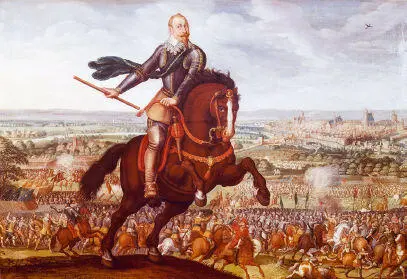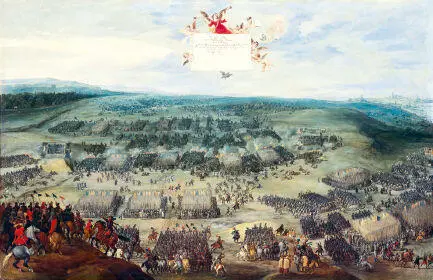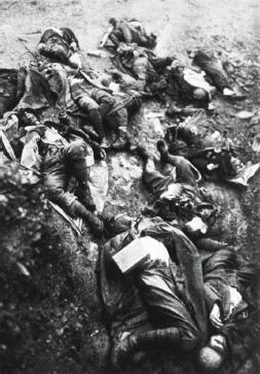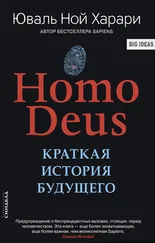Audiences in Homeric Greece, in the Roman Empire or in medieval Europe would have found the idea familiar and highly attractive. Twenty challengers go in – only one hero comes out. ‘Wonderful!’ a Homeric prince, a Roman patrician or a crusader knight would have thought to himself as he sat down to watch. ‘Surely we are about to see amazing adventures, life-and-death battles and incomparable acts of heroism and betrayal. The warriors will probably stab each other in the back, or spill their entrails for all to see.’
What a disappointment! The back-stabbing and entrails-spilling remain just a metaphor. Each episode lasts about an hour. Out of that, fifteen minutes are taken up by commercials for toothpaste, shampoo and cereals. Five minutes are dedicated to incredibly childish challenges, such as who can throw the most coconuts into a hoop, or who can eat the largest number of bugs in one minute. The rest of the time the ‘heroes’ just talk about their feelings! He said she said, and I felt this and I felt that. If a crusader knight had really sat down to watch Survivor , he would probably have grabbed his battleaxe and smashed the TV out of boredom and frustration.
Today we might think of medieval knights as insensitive brutes. If they lived among us, we would send them to a therapist, who might help them get in touch with themselves. This is what the Tin Man does in The Wizard of Oz . He walks along the yellow brick road with Dorothy and her friends, hoping that when they get to Oz, the great wizard will give him a heart, while the Scarecrow wants a brain and the Lion wants courage. At the end of their journey they discover that the great wizard is a charlatan, and he can’t give them any of these things. But they discover something far more important: everything they wish for is already within themselves. There is no need of some godlike wizard in order to obtain sensitivity, wisdom or bravery. You just need to follow the yellow brick road, and open yourself to whatever experiences come your way.
Exactly the same lesson is learned by Captain Kirk and Captain Jean-Luc Picard as they travel the galaxy in the starship Enterprise , by Huckleberry Finn and Jim as they sail down the Mississippi, by Wyatt and Billy as they ride their Harley-Davidsons in Easy Rider , and by countless other characters in myriad other road movies who leave their home town in Pennsylvania (or perhaps New South Wales), travel in an old convertible (or perhaps a bus), pass through various life-changing experiences, get in touch with themselves, talk about their feelings, and eventually reach San Francisco (or perhaps Alice Springs) as better and wiser individuals.
The Truth About War
The formula Knowledge = Experiences × Sensitivityhas changed not just our popular culture, but even our perception of weighty issues like war. Throughout most of history, when people wished to know whether a particular war was just, they asked God, they asked scriptures, and they asked kings, noblemen and priests. Few cared about the opinions and experiences of a common soldier or an ordinary civilian. War narratives such as those of Homer, Virgil and Shakespeare focused on the actions of emperors, generals and outstanding heroes, and though they did not hide the misery of war, this was more than compensated for by a full menu of glory and heroism. Ordinary soldiers appeared as either piles of bodies slaughtered by some Goliath, or a cheering crowd hoisting a triumphant David upon its shoulders.

Jean-Jacques Walter, Gustav Adolph of Sweden at the Battle of Breitenfeld (1631).
© DeAgostini Picture Library/Scala, Florence.
Look, for example, at the painting above of the Battle of Breitenfeld, which took place on 17 September 1631. The painter, Jean-Jacques Walter, glorifies King Gustav Adolph of Sweden, who led his army that day to a decisive victory. Gustav Adolph towers over the battlefield as if he were some god of war. One gets the impression that the king controls the battle like a chess player moving pawns. The pawns themselves are mostly generic figures, or tiny dots in the background. Walter was not interested in how they felt while they charged, fled, killed or died. They are a faceless collective.
Even when painters focused on the battle itself, rather than on the commander, they still looked at it from above, and were far more concerned with collective manoeuvres than with personal feelings. Take, for example, Pieter Snayers’s painting of the Battle of White Mountain in November 1620.
The painting depicts a celebrated Catholic victory in the Thirty Years War over heretical Protestant rebels. Snayers wished to commemorate this victory by painstakingly recording the various formations, manoeuvres and troop movements. You can easily tell the different units, their armament and their place within the order of battle. Snayers gave far less attention to the experiences and feelings of the common soldiers. Like Jean-Jacques Walter, he makes us observe the battle from the Olympian vantage point of gods and kings, and gives us the impression that war is a giant chess game.

Pieter Snayers, The Battle of White Mountain.
© Bpk/Bayerische Staatsgemäldesammlungen.
If you take a closer look – for which you might need a magnifying glass – you realise that The Battle of White Mountain is a bit more complex than a chess game. What at first sight seem to be geometrical abstractions turn upon closer inspection into bloody scenes of carnage. Here and there you can even spot the faces of individual soldiers running or fleeing, firing their guns or impaling an enemy on their pikes. However, these scenes receive their meaning from their place within the overall picture. When we see a cannonball smashing a soldier to bits, we understand it as part of the great Catholic victory. If the soldier is fighting on the Protestant side, his death is a just reward for rebellion and heresy. If the soldier is fighting in the Catholic army, his death is a noble sacrifice for a worthy cause. If we look up, we can see angels hovering high above the battlefield. They are holding a billboard which explains in Latin what happened in this battle, and why it was so important. The message is that God helped Emperor Ferdinand II defeat his enemies on 8 November 1620.
For thousands of years, when people looked at war, they saw gods, emperors, generals and great heroes. But over the last two centuries, the kings and generals have been increasingly pushed to the side, and the limelight shifted onto the common soldier and his experiences. War novels such as All Quiet on the Western Front and war films such as Platoon begin with a young and naïve recruit, who knows little about himself and the world, but carries a heavy burden of hopes and illusions. He believes that war is glorious, our cause is just and the general is a genius. A few weeks of real war – of mud, and blood, and the smell of death – shatter his illusions one after another. If he survives, the naïve recruit will leave war as a much wiser man, who no longer believes the clichés and ideals peddled by teachers, film-makers and eloquent politicians.
Paradoxically, this narrative has become so influential that today it is told over and over again even by teachers, film-makers and eloquent politicians. ‘War is not what you see in the movies!’ warn Hollywood blockbusters such as Apocalypse Now , Full Metal Jacket and Blackhawk Down . Enshrined in celluloid, prose or poetry, the feelings of the ordinary grunt have become the ultimate authority on war, which everyone has learned to respect. As the joke goes, ‘How many Vietnam vets does it take to change a light bulb?’ ‘You wouldn’t know, you weren’t there.’ 6
Читать дальше
Конец ознакомительного отрывка
Купить книгу














